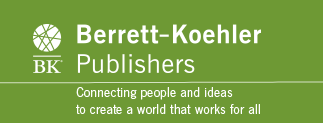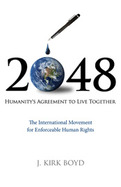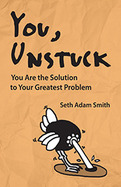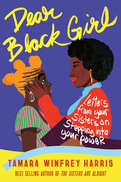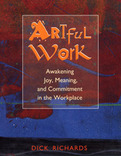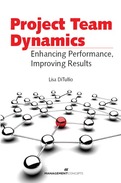2010
The handbook of an extraodinary project:
In 1948 the United Nations General Assembly adopted the Universal Declaration of Human Rights, a deeply inspiring document that has been translated into over 300 languages and dialects. But because its provisions are not enforceable, its promise has not been fulfilled. Human rights violations continue in every corner of the globe, the cause of countless individual tragedies as well as large-scale disasters like war, poverty and environmental ruin.
It’s time to take the next step. 2048 sets out a visionary, audacious, but, Kirk Boyd insists, achievable goal: drafting an enforceable international agreement that will allow the people of the world to create a social order based upon human rights and the rule of law. Boyd and the 2048 Project aim to have this agreement, the International Convention on Human Rights, in place by the 100th anniversary of the Universal Declaration.
Written documents have always played a key role in advancing human rights: the Code of Hammurabi, the Magna Carta, the Declaration of Independence. The express purpose of the International Convention is to safeguard what Boyd calls the Five Freedoms, adding freedom for the environment to Franklin Roosevelt’s famous Four Freedoms: freedom of speech, freedom of religion, freedom from want, and freedom from fear.
Boyd skillfully anticipates objections to the notion of a universal and enforceable written agreement—that it would be culturally insensitive, too expensive, unacceptably limit national sovereignty—and convincingly answers them. In fact some promising first steps have already been taken. He describes existing transnational agreements with effective compliance mechanisms that can serve as models.
But Boyd wants to inspire more than argue. In 2048 he urges everyone to participate in the drafting of the agreement via the 2048 website and describes specific actions people can take to help make it a reality. “What you do with what you read” Boyd writes, “is as important as what this book says.” Little by little, working together creatively with the tools now available, we can take the next step forward in the evolution of human rights.
2015
But you are also the solution to your greatest problem.
This book combats a destructive mind-set that we all sometimes fall into: I can't change. I am the victim of my circumstances, and I am confined by my personal limitations. This philosophy, though intangible, destroys more dreams and limits more lives than any actual, physical obstacle. To show us how to overcome this philosophy of fear, Smith draws on literature, history, and his personal experiences with chronic depression, as well as on encounters with remarkable “ordinary” people who've embraced a different philosophy: the belief that we possess the power to lift ourselves out of the abyss and into the light.
Smith inspires us to see that no matter how dire our circumstances may be, there is always a positive step you can take, however small it might be. He doesn't sugarcoat the difficulties or offer promises of overnight success. But he does promise that if you continue to see yourself as a victim you'll remain frozen and fearful. We may not be able to control what happens to us, but we can always control how we react.
Through illustrative examples from a wide variety of industries, this book shows how to
• Design sustainable products • Green your facilities • Find green vendors • Use renewable energy • Reduce harmful emissions • Recycle waste products, and more
The emphasis is on practicality—stand-alone chapters you can read when you need them and tools you can use to implement change in any area of your organization.
-
The first book to show small and medium-sized companies how to go green not just cost effectively, but profitably.
-
Offers detailed, specific advice and tools for greening every area of an organization
-
Copublished with Social Venture Network, one of the nations leading socially responsible business organizations
If you run a small to medium-sized business and youre wondering whether or not to go green, this book probably isnt for you. Although David Mager and Joe Sibilia do include ten reasons that sustainability makes economic and ecological sense, theyre not here to convince you why. Street Smart Sustainability is about howdetailed, nuts-and-bolts, step by step advice on how to green business green profitably.
Read cover to cover this is a comprehensive A to Z handbook, but each chapter also works as a self-contained stand-alone guide to a specific business function. So if you need to you can go right to whichever chapter speaks to your needs at the moment.
Mager and Sibilia begin by discussing how to get employee buy-in to and motivate your company into becoming sustainable. Then they cover how to get startedauditing your current sustainability position, developing a plan to move forward, and quantitatively measuring your progress.
With a plan and metrics in place, Mager and Sibilia move on to the particulars. They detail how to design products to be sustainable from the get-to, green your facilities, use renewable energy, minimize your carbon footprint, find green vendors to work with, reduce harmful emissions, and recycle waste products. The book is filled with real-world examples from a variety of businesses and industries. The emphasis is always on practicalitybesides seasoned advice Mager and Sibilia provide a wide range of tools you can use immediately to implement their suggestions
Street Smart Sustainability is a road map to the sustainable low-hanging fruit at a time when the public is hungry for businesses that demonstrate genuine respect for the environment. It provides simple tools so you can make continuous, cost-effective improvements in your sustainability practicespractices that diffuse into the organizational DNA and become fixtures, shifting the prevailing corporate culture.
2021
"Dear Dope Black Girl, You don't know me, but I know you. I know you because I am you! We are magic, light, and stars in the universe.” So begins a letter that Tamara Winfrey Harris received as part of her Letters to Black Girls project, where she asked black women to write honest, open, and inspiring letters of support to young black girls aged thirteen to twenty-one. Her call went viral, resulting in a hundred personal letters from black women around the globe that cover topics such as identity, self-love, parents, violence, grief, mental health, sex, and sexuality.
In Dear Black Girl, Winfrey Harris organizes a selection of these letters, providing “a balm for the wounds of anti-black-girlness” and modeling how black women can nurture future generations. Each chapter ends with a prompt encouraging girls to write a letter to themselves, teaching the art of self-love and self-nurturing. Winfrey Harris's The Sisters Are Alright explores how black women must often fight and stumble their way into alrightness after adulthood. Dear Black Girl continues this work by delivering pro-black, feminist, LGBTQ+ positive, and body positive messages for black women-to-be—and for the girl who still lives inside every black woman who still needs reminding sometimes that she is alright.
1995
Work and art are not, as we have come to believe, mutually exclusive. The industrial revolution, it can be said, drove art out of work. Our new-found ability for mass production robbed workers of their art, forcing them to find "jobs." Work quickly came to be viewed as something we do to survive and art merely something to hang on our walls. The reward for work became extrinsic rather than intrinsic. Instead of pursuing joy within work, we began to pursue it in leisure and in the external rewards of employment.
In Artful Work, Dick Richards reminds us that all work can be artful, and that artfulness is the key to passion and commitment. He applies the assumptions of artists about work and life to the challenges facing people and organizations in today's rapidly changing world. This book provides a new perspective on those challenges that is both practical and visionary, singing a provocative new tune for those journeying to make work more meaningful and joyful, and organizations more committed to their purposes. Readers will learn to take an inspired approach to their work, renewing their experience of it as a creative, participative, and purposeful endeavor.
There are seven basic assumptions of the concept of Artful Work:
o All Work Can Be Artful
o The Reward for Artful Work Is In the Doing
o The Ambition of Artful Work Is Joy
o All Work Is Spiritual Work
o Artistry Demands That the Artist Own the Work Process
o Artful Work Requires Consistent and Conscious Use of the Self
o As the Artist Makes the Work, the Work Makes the Artist
Artful Work sets forth an entirely new way of thinking about all of the work we do, and the organizations that contain our work. It offers a compelling guide to honoring artistry in our work, organizations, and leadership roles, and creating workplaces that truly honor our passion. It speaks to the courageous and hopeful among us who seek to make our work and workplaces more joyful and productive.
- Applies an artistic perspective to the challenges facing people and organizations today
- Shows how to bring all four human energies-physical, intellectual, emotional, and spiritual-together in our workplaces
Companies that embrace the power of collaboration realize that the best way to solve complex problems is to build cohesive teams made up of members with different skills and expertise. Getting teams to work productively is at the heart of project management. Developing the structure for teams to work dynamically at a high level of efficiency and effectiveness is at the heart of this book.
The author clearly outlines methods for creating and implementing a structure to deal with the inevitable difficulties that any team may encounter. With examples drawn from contemporary project management, she demonstrates the effectiveness of this straightforward approach and highlights the risks of not building a strong team culture.
The author offers simple and proven techniques for:
• Launching a team
• Defining and clarifying the goals of the team
• Implementing and reinforcing appropriate team behaviors
To help ensure the delivery of on-time project objectives, the author also gives practical advice aimed at ensuring productive team meetings, encouraging information sharing, and moving the team toward solutions in the face of challenges and conflict.
